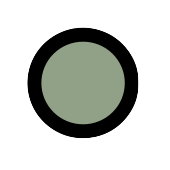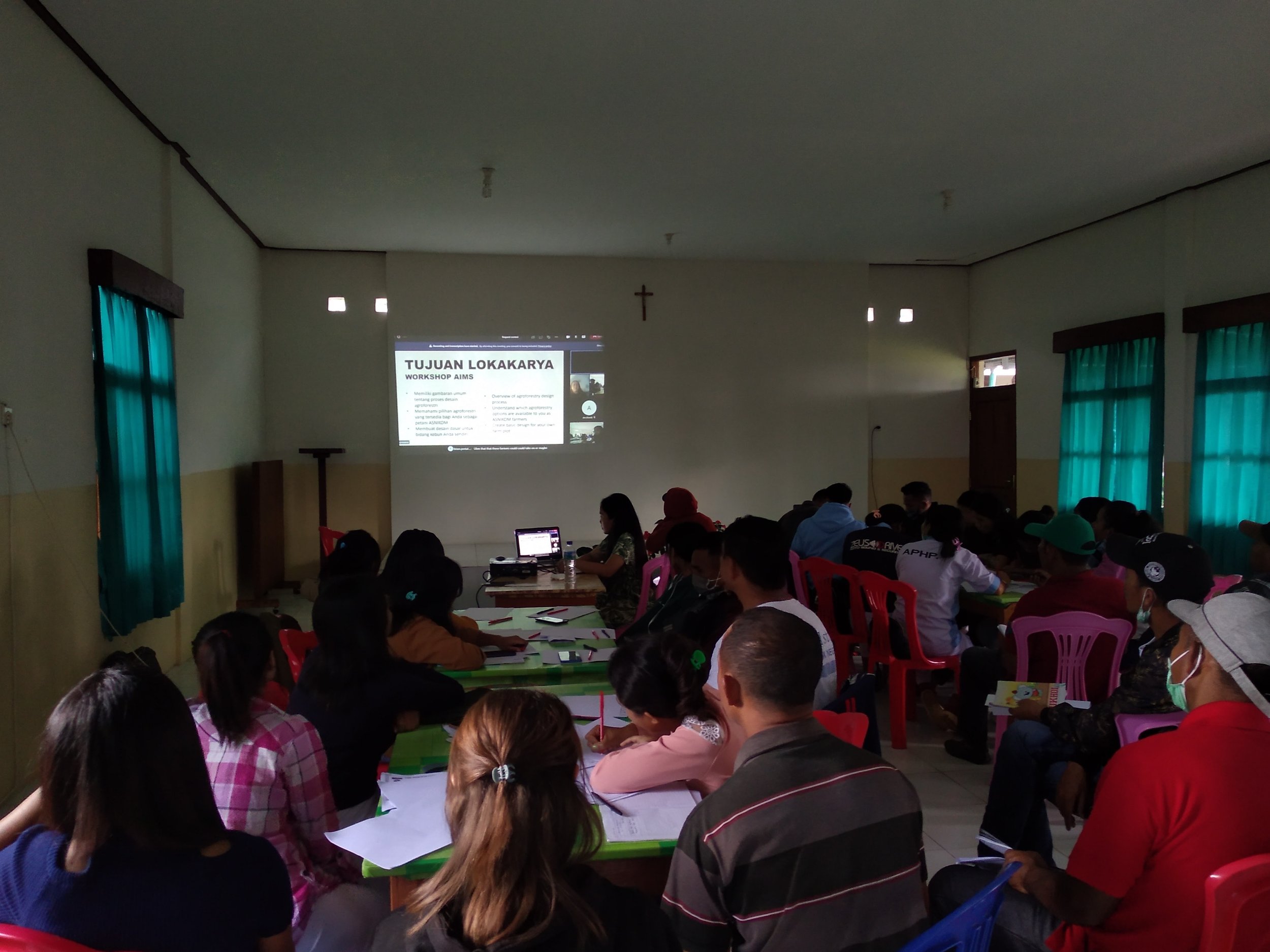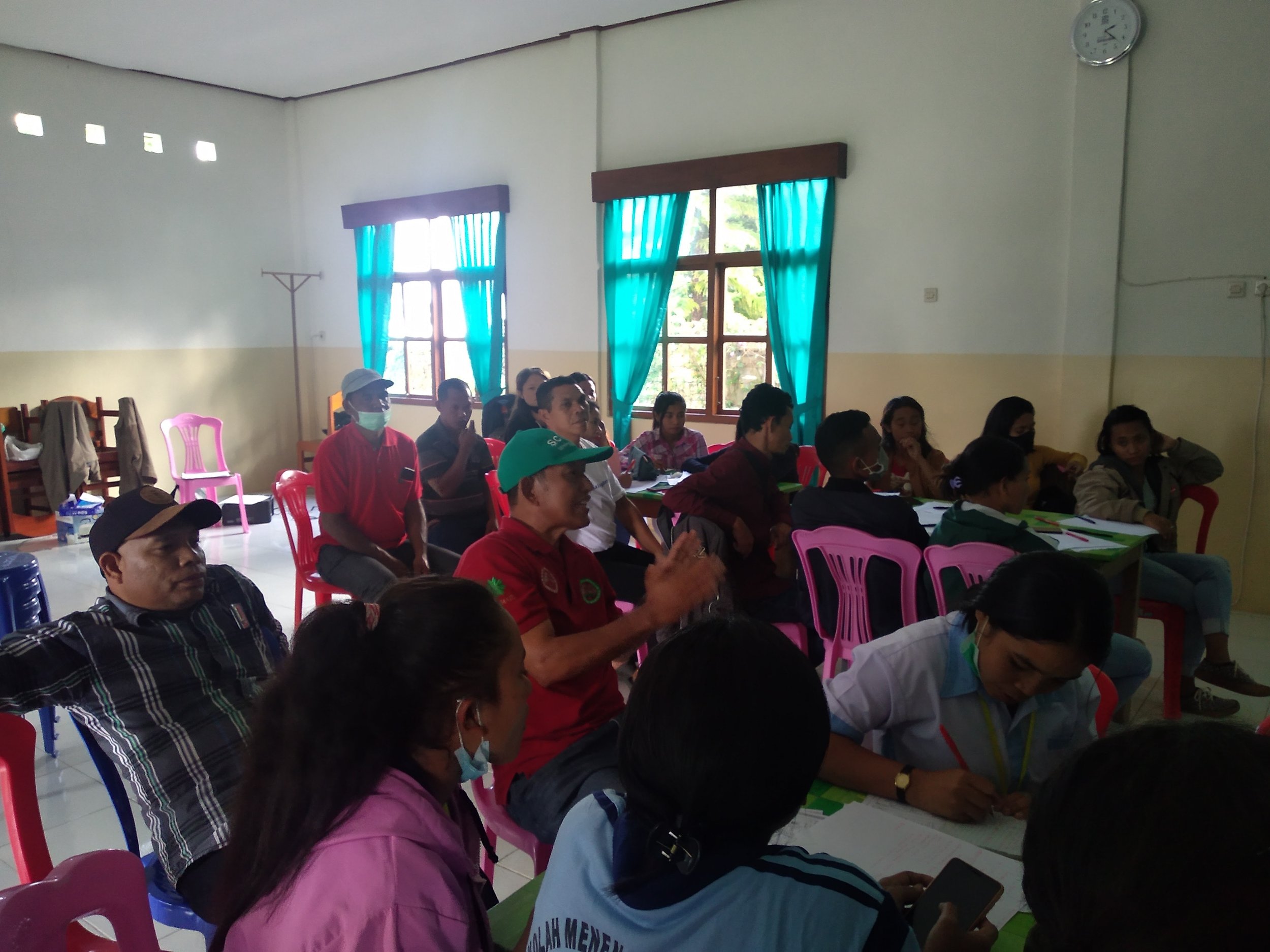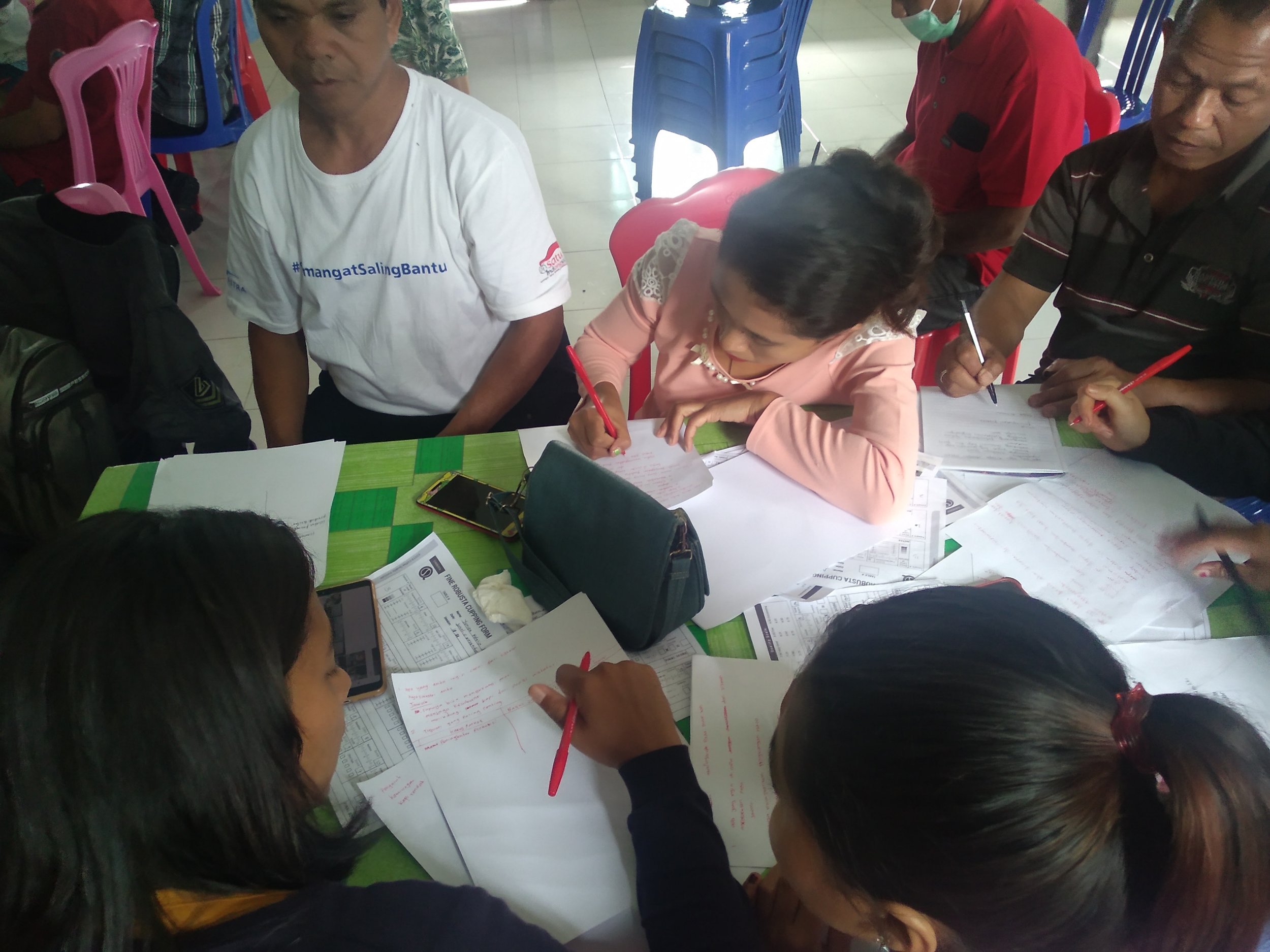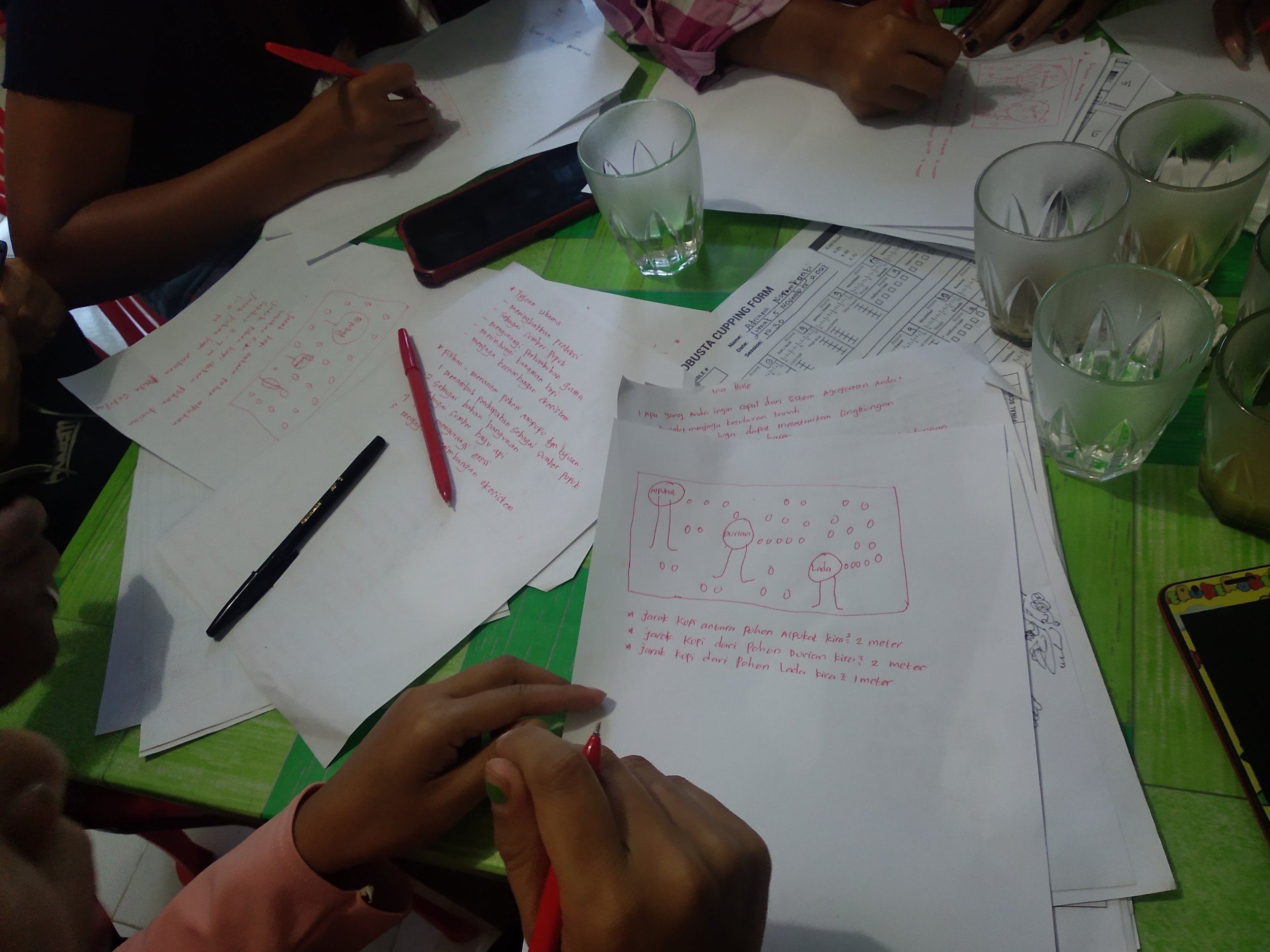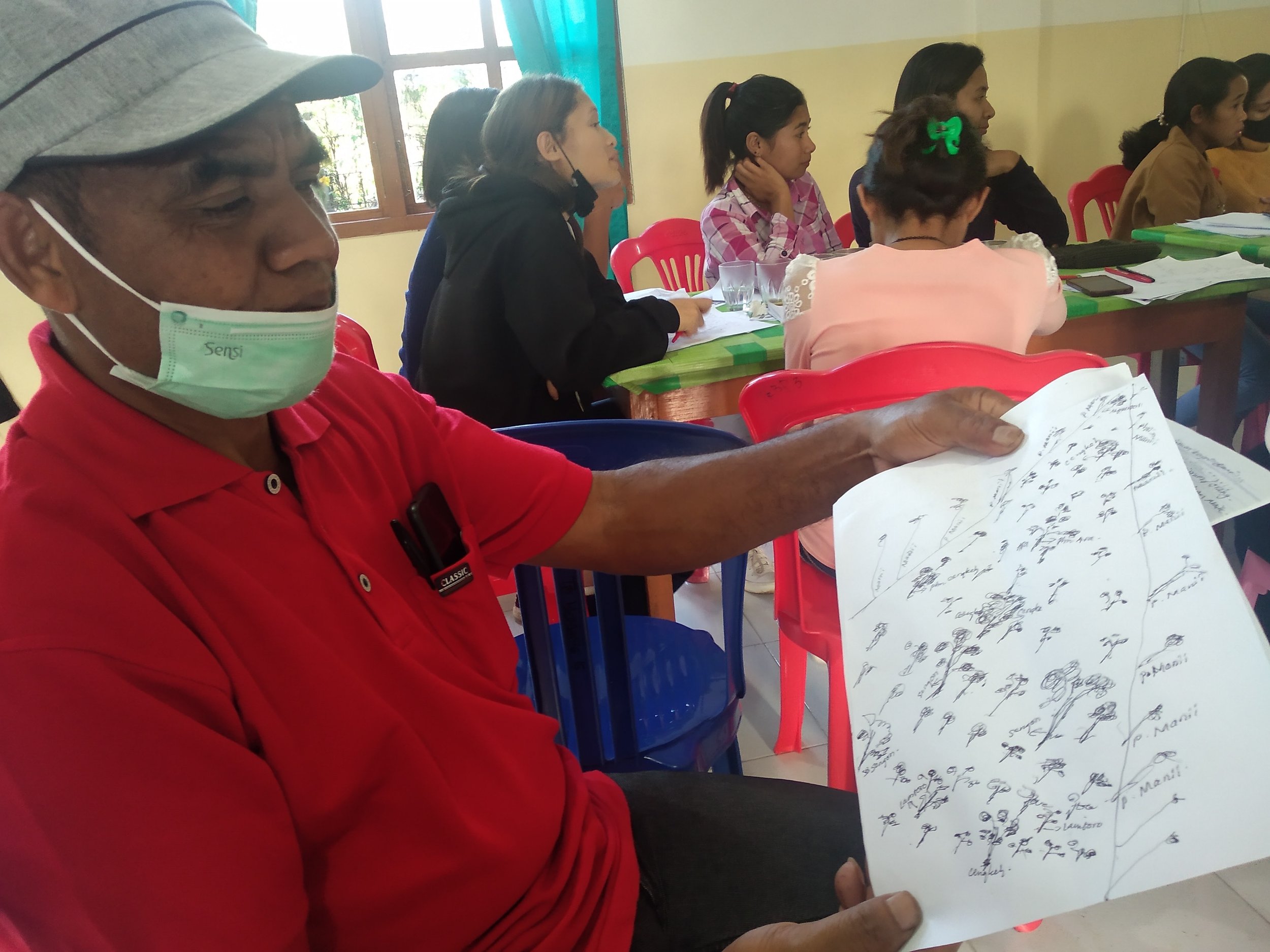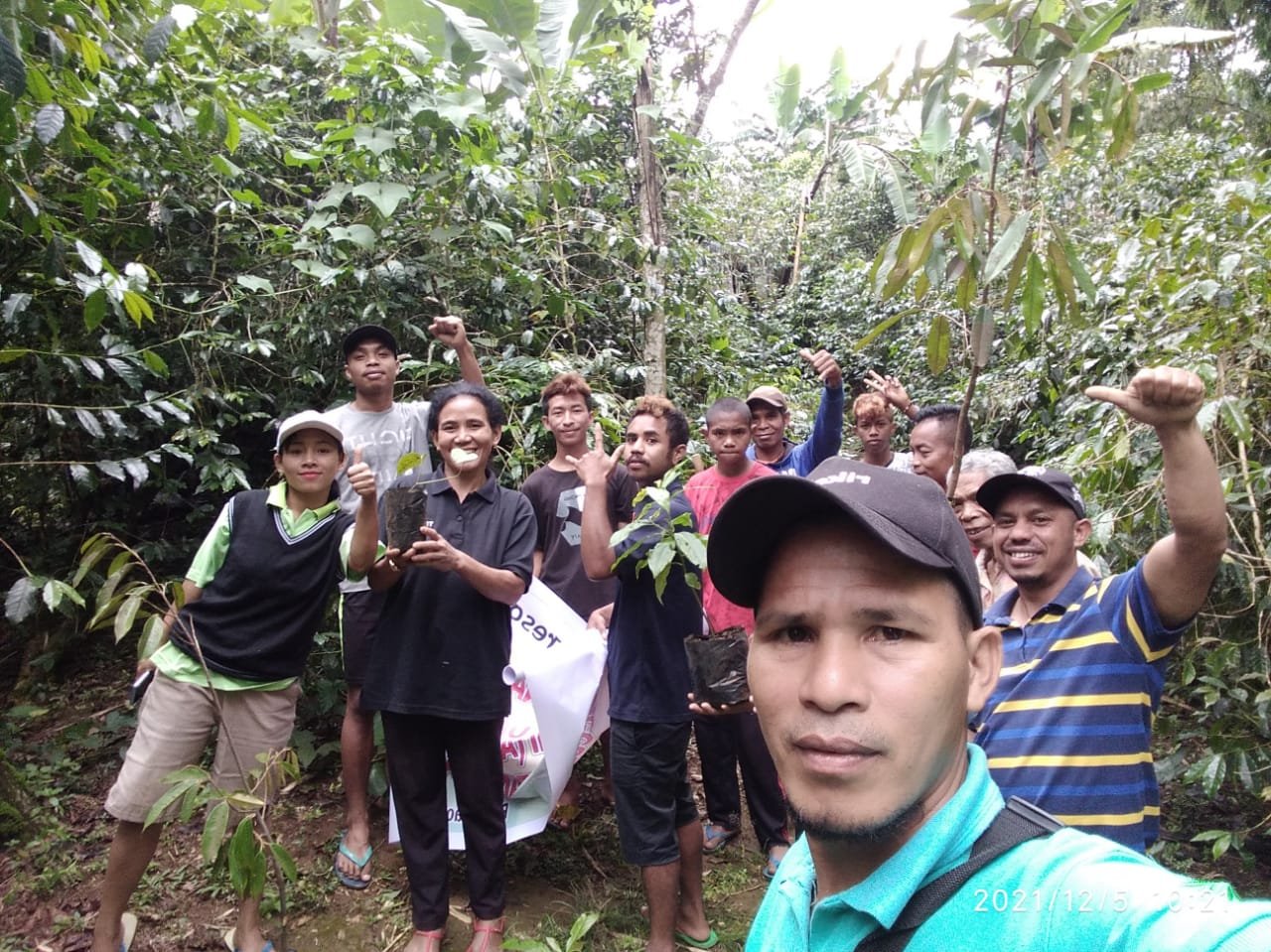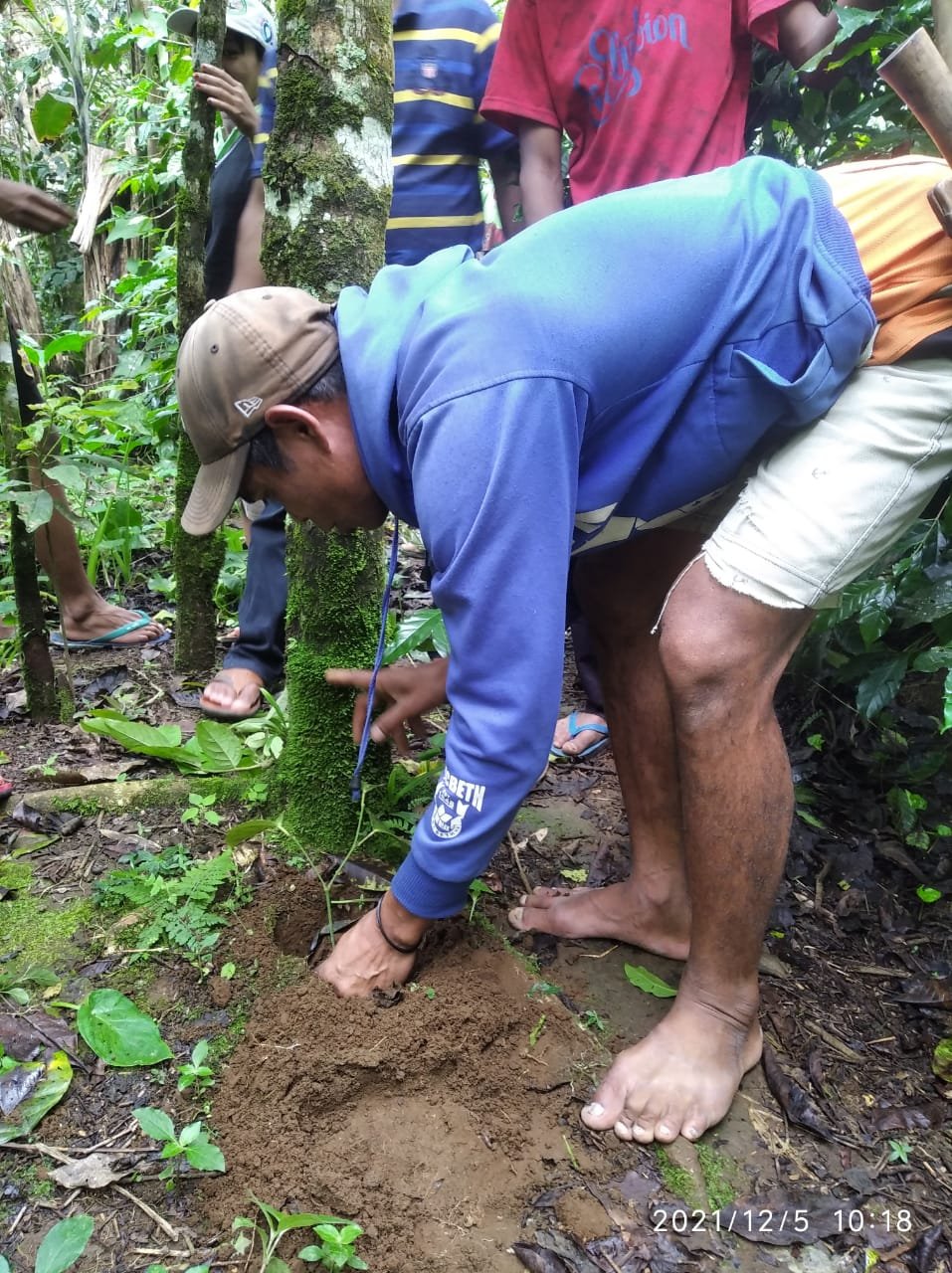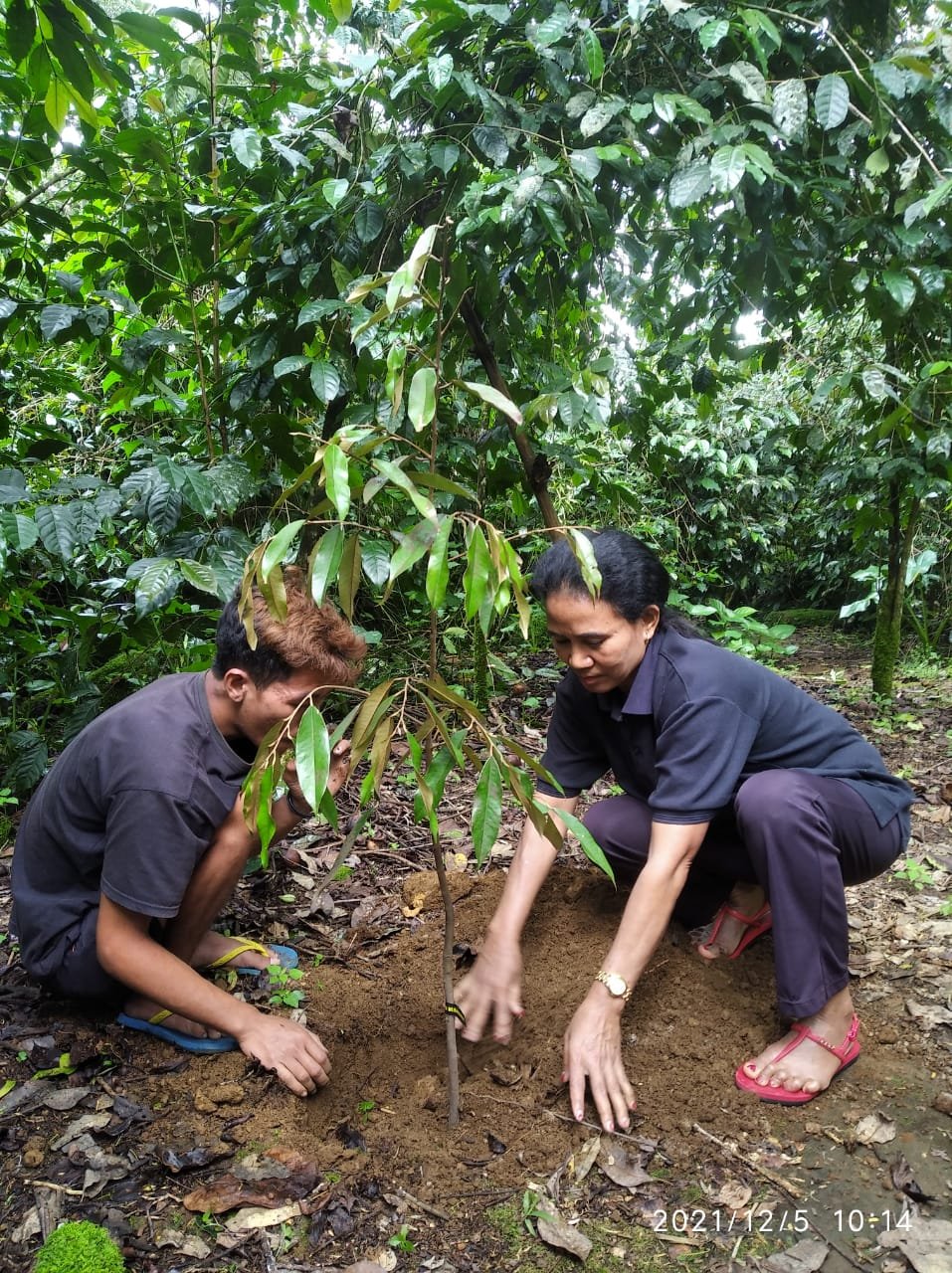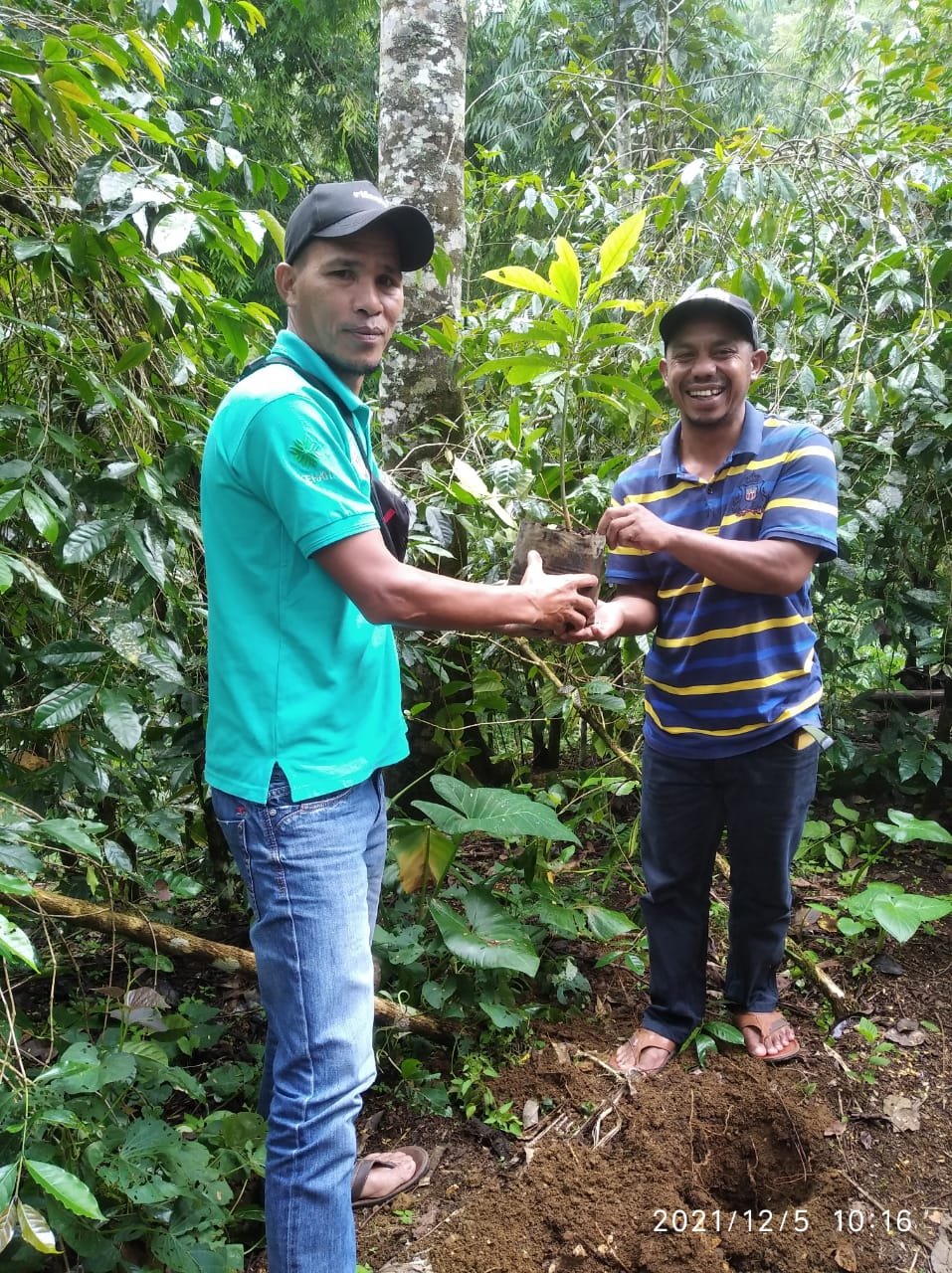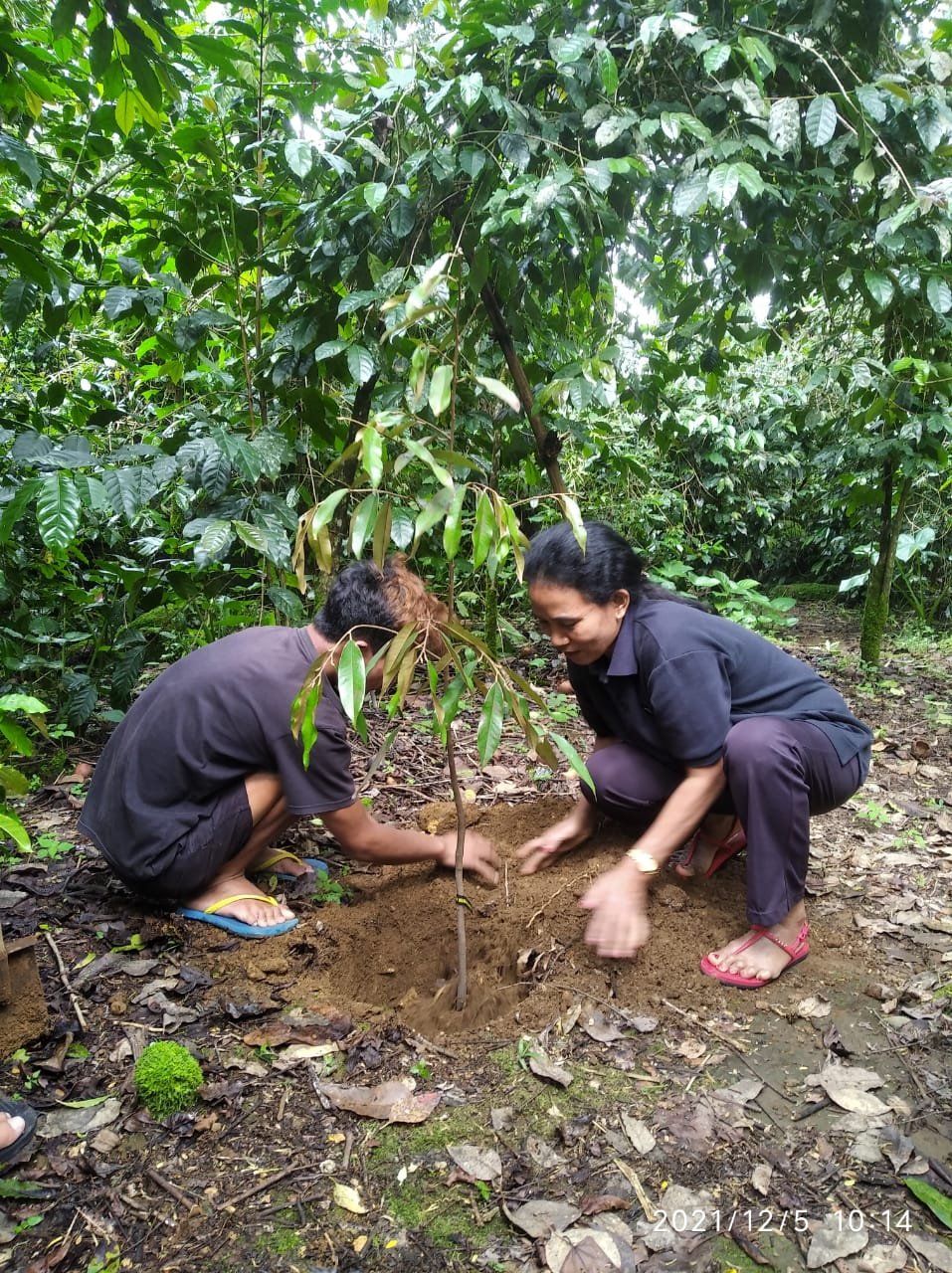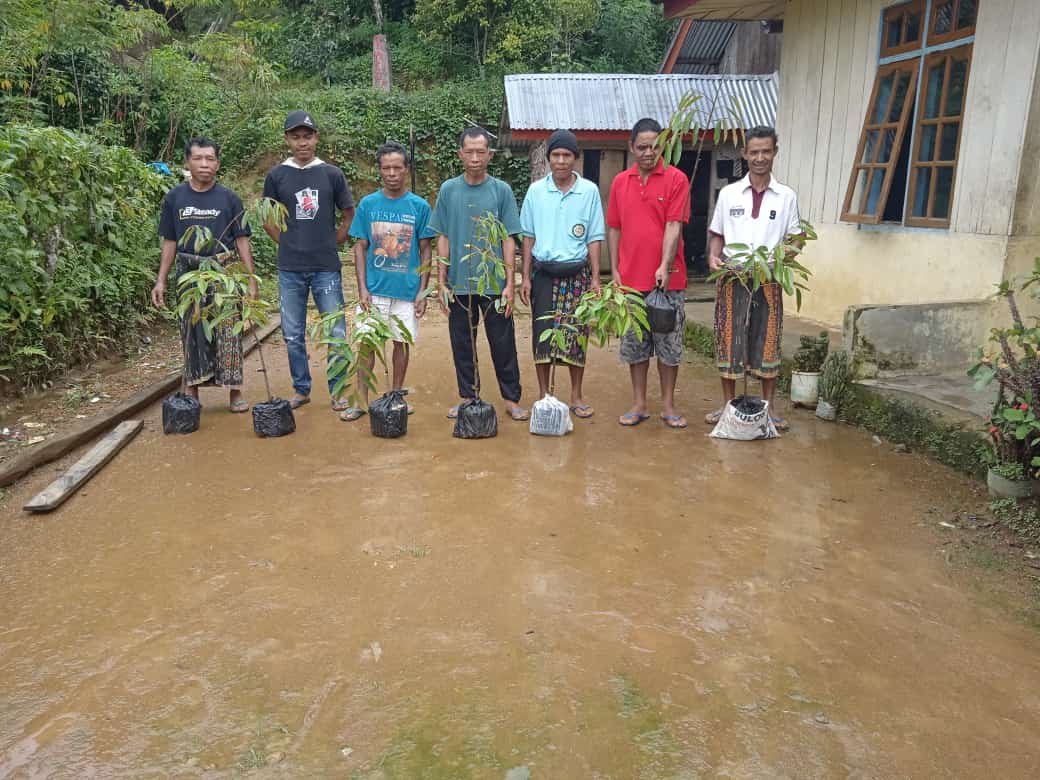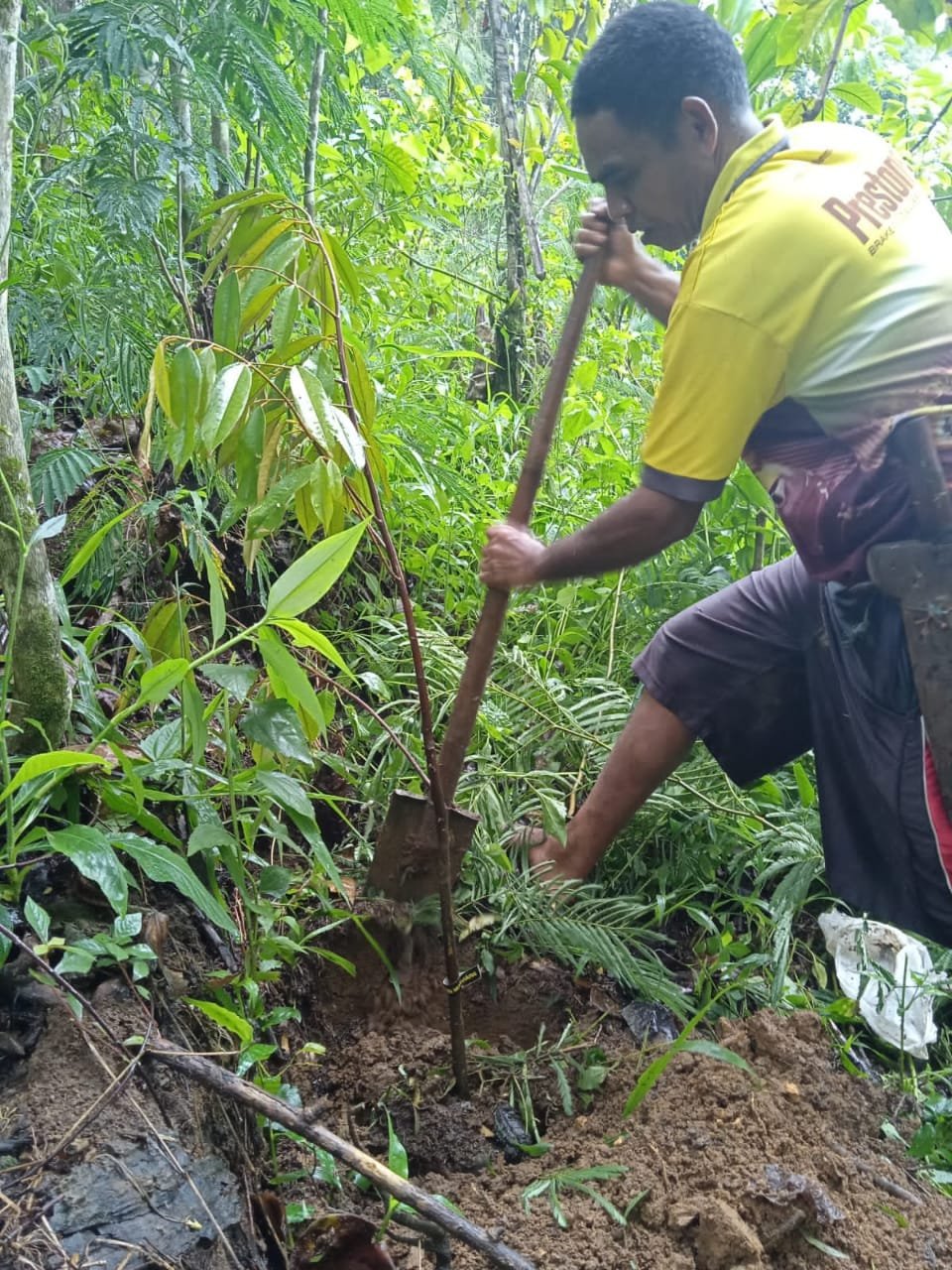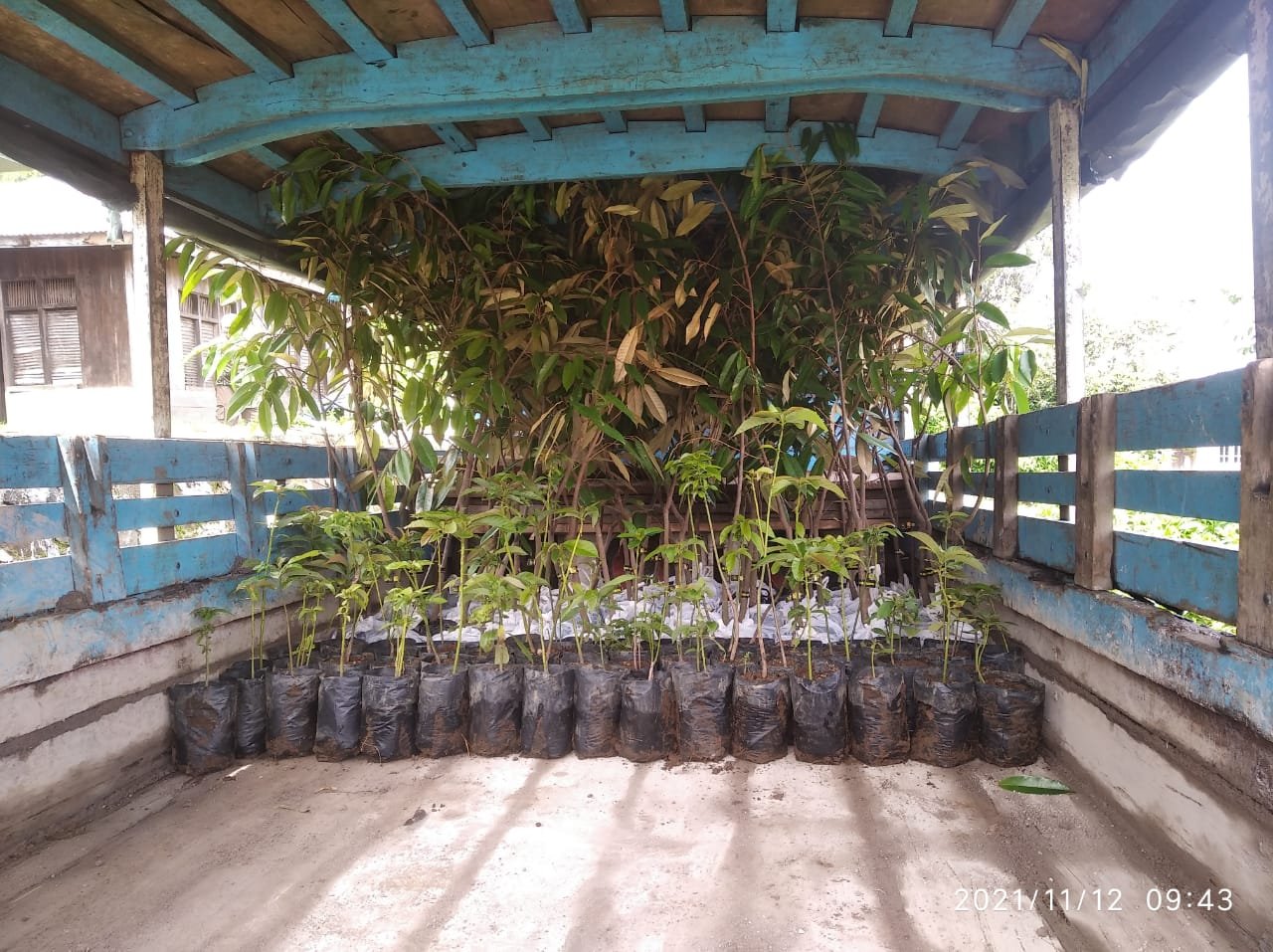the challenge
To inspire farmers in Flores to create an agroforestry model based on their possibilities, challenges, and needs. To collaboratively determine which species are better to intercrop with the existing coffee trees and assist farmers on achieving alternative sources of income through the commercialisation of such species.
WHERE: Flores, Indonesia
WHAT: the creation of an agroforestry system to improve coffee yield and offer alternative sources of income to farmers in Flores.
WHO: 100 farmers from Flores, Indonesia, This Side Up, MVO, Asnikom, Pretaterra, CCF, and Progreso
GOALS:
total investment:€17,788
provided by This Side Up, and MVO Nederland
To design and implement an agroforestry system in close collaboration with farmers from Flores.
To develop written resources that can aid in the development of the regenerative project in Flores and further foster agroforestry projects in other regions. This includes: a species profiles of durian, avocado and pepper; a technical guide on how to create an agroforestry system for coffee as well as one for Carbon Foundations, and a technical summary of the key.
To offer direct support to farmers at the ASNIKOM cooperative in Flores, Indonesia through interactive workshops that encourage farmers to share their experiences, and thereby design a system that not only supports their needs, but their perspectives and possibilities.
Maintaining and optimization of Agroforestry Coffee capacity through a demo-plot that will serve as a proof of the benefits of the system and inspire farmers to further develop it.
To ensure, in the near future, a sustainable and productive future for farmers through the diversification of crops and assistance in its marketing.
Seedlings: €5,878
ASNIKOM received €5000 for the purchase of seedlings. The final seedling cost, including transport, was equivalent to €5 904,70 on the day of purchase, the additional cost was covered by ASNIKOM themselves.
AgroForestry foundations Manual: €5,280
This was a technical guide for the design of coffee-based agroforestry systems that aims to be applied in other regions as well.
Carbon foundations Manual: €5, 280
This is a technical introduction to the importance, loss and sequestration of carbon in coffee agroforestry systems.
Three technical manuals: €1,440
This document presented a profile of three species\ - avocado, durian and pepper - for application in coffee agroforestry systems. Examples and discussions focused on intercropping situations where coffee was the main crop.
The profiles were supplemented with generic year-by-year advice for the establishment and management of each species. The content was designed for use by field staff working with the farmers to implement agroforestry systems.
PROJECT
timeline
The development of this project and its main achievements, through time.
Parties gather and the project begins
July, 2021
Maarten and Lennart had been ambitious in getting agroforestry projects off the ground with positive impact, and linking impact to MVO and the support they could offer. Adri, in Indonesia, was a strong partner so was a logical starting point.
land evaluation
July-September 2021
Land examination, status of coffee trees and possibilities with farmers are evaluated.
collaborative
agroforestry
design
October, 2021
Tirion offers a workshop to farmers in Flores. They collaboratively design an agroforestry plan that aims, first of all, to work around the current coffee trees, some quite old. Three species are identified for the project: durian, pepper and avocado. Durian because it shields the coffee, avocado because it shades it and pepper's because of its very limited footprint.
seedlings arrive, trees are planted
November-December 2021
250 durian trees, 2,500 avocados, 2000 black pepper were distributed in the 0,5 hectares demo plot. Coffee trees are pruned.
Background
Flores is one of the poorest regions in Indonesia, poor land quality, added to complicated geographical conditions, have further limited the resources for farmers. Flores is quite steep, making productivity a challenge, and although farmers subsist only on coffee, they resist changing their traditional methods to more modern ones: coffee has been cultivated in Flores for a long time, but it hasn't been productive yet.
In this sense, Flores is not very advantageous for any other crop: since the land is not as fertile, rice is not an option and although in the past, development programs have tried to integrate farming and cattle, it hasn’t worked out. In a sense, farmers in Flores are “stuck” with coffee, but they cannot produce it in a conductive manner.
Adri, from Ontosoroh, became aware of this problematic situation and in collaboration with Lennart and Maarten came up with a few ideas. If they improved the yield through better agriculture by upgrading the soil, coffee production could grow and, while doing so, they could also integrate other crops to the land. At first, however, farmers resisted: their concern was that traditional organic farming had been their practice for decades, and thereby they weren’t willing to change their ways so quickly. Lennart, Maarten and Adri tried to find a solution which involved improving the biodiversity in Flores and helping the farmers to stop relying on coffee. An agroforestry system was indeed the most logical solution for the area. It would offer a depth in their understanding of the world beyond coffee. Soon after Lennart and Maarten sought the resources and the project began.
““To have someone from the outside come up with a design that, in theory, is good for the situation but doesn’t take into account the people who might implement it, their views, knowledge and opinions, will not lead to significant change. It’s unlikely it will provide the outcomes that people want.”
”
Methodology:
The collaborative sessions Tirion offered were approached with a genuine interest in the farmers' needs, challenges and possibilities. More than anything, Tirion aimed to help farmers find their true goal and to include agroforestry in the solving of the challenges farmers face on the ground. In this sense, the workshops offered the tools to come up with ideas, inviting the farmers to think freely and acknowledge their own wisdom at all times.
However, when goals are unclear for the farmers, the questions are: what are the key challenges that you face? Is the coffee getting too much sun or does it dry out, is it too shady, is it getting a particular fungal disease? Based also on the weather and geographical conditions, the basic production challenges are identified and information on the types of agroforestry schemes are presented.
Because this project was executed during the pandemic, the sessions were virtual. The working session included a couple of exercises that aimed to invite the farmer to reflect on what they have in their farms now, what are the key challenges that they face, and what do they want to see happening in the near future. After this process, the group came together and analysed the available options. For example, using trees differently or better, planting more, or changing the way trees were used in the farm.
“We ran some work sessions together with the coffee farmers and went through a couple of exercises to get people thinking: what they have in their farms now, what are the key challenges that they face, what do they actually want to see happening in their farm and then come together and analyze the available options”
Design Elements:
Biophysical contracts: The ecosystem: Climate, soil, water, altitude, ecosystem biodiversity.
Social: economics, selling products, what can you provide?
What do the people need from this? What’s the economic drive of this system? Cultural elements.
Direct outcomes
Avocado is productive for internal use, pepper cultivation is small, and durian is not yet productive. Since this was the first step of a long-term project, results will become visible in the next five to ten years. The development of the other species (durian and pepper) will guide the steps to take.
Indirect outcomes
Because the workshops were held during the pandemic, and Tirion from Agriterra was in another country, questions were more general. This sparked creativity and freedom in the farmers and helped them become more independent in their designs.
Future steps
To continue finding the balance between preservation and regeneration, regenerate bit by bit and slowly introduce different types of trees. To scale up the project to more farmers and increase pepper production. The design process needs to continue so that more well-informed decisions about the species can be made in the future.
““Farmers were willing to experiment and wondered what the trees would give them in 5-10 years. ‘Where can I sell it when these trees become productive?’”
”
2024 UPDATE
Avocadoes the trick!
Madhu went to Indonesia on a month long trip and learnt more about the progress of this project. So far using the regenerative premium, ASNIKOM distributed avocado seedlings to the members supplying to This Side Up. It was intercropped with durian and pepper. They have observed that the success rate for durian was 40%, pepper 30% and avocadoes 70%. The reason for ‘failure’ was due to plants not growing at that certain elevation as well as lack of sufficient water/fertilizer inputs. Given the demand for avocadoes is high due to the tourism in Labuan Bajo, they have decided to see it through so it can also help with the income.
DRYING DOMES
Another part of the regenerative premium fund was designated to Asnikom for the project to support the quality of coffee production with assistance from Rikolto. TSU provided partial funding to support the project from the regenerative premium fund for the amount of EUR 2.772. It allowed us to contribute to building of 8 drying domes in 3 in Rende Nao and 5 in other villages in cooperation with Rikolto and Ontosoroh to curb drying problems due to incessant rains. Currently several of these drying domes are also going to design changes to make them structurally more strong for the upcoming season based on experience. ASNIKOM works closely with Rikolot on the design, implementation of these domes as well as setting up drying beds for the upcoming season. The total financial contribution for this project from This Side Up
RESOURCES
AGROFORESTRY FOUNDATIONS: A TECHNICAL GUIDE FOR THE DESIGN OF COFFEE-BASED AGROFORESTRY SYSTEMS
Produced by Tirion Keatinge in partnership with PRETATERRA, This Side Up coffees, Progreso Foundation and MVO Nederland.
CARBON FOUNDATIONS: A TECHNICAL INTRODUCTION TO THE IMPORTANCE, LOSS AND SEQUESTRATION OF CARBON IN COFFEE AGROFORESTRY SYSTEMS
Produced by Tirion Keatinge in partnership with PRETATERRA, This Side Up coffees, Progreso Foundation and MVO Nederland.
SPECIES PROFILES
PEPPER (Piper nigrum), DURIAN (Durio zibethinus), AND AVOCADO (Persea americana) IN COFFEE AGROFORESTRY SYSTEMS
Produced by Tirion Keatinge in partnership with PRETATERRA, This Side Up coffees, Progreso Foundation and MVO Nederland.
ASNIKOM Agroforestry Project 2021
This is the final project report delivered to MVO Nederland
Project images:
Feel free to use when supporting this initiative.





